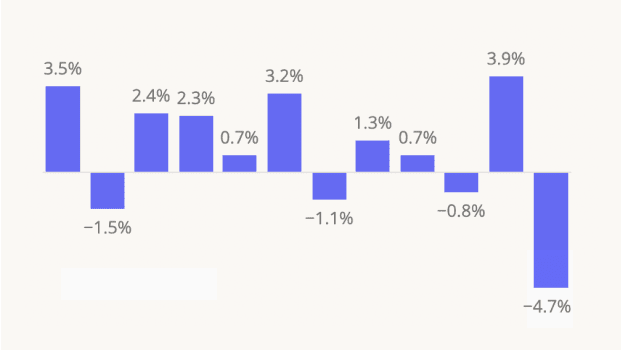As value continues to dominate consumer behavior in 2025, full-service restaurants (FSRs) are finding creative ways to adapt to rising costs and shifting consumer priorities. We dove into the data to find out which FSR segments are winning this year and what’s driving these trends.
A Positive Trajectory
Despite ongoing anxiety about the economy, FSR visitation trends show that consumers continue to seek out opportunities to enjoy sit-down meals outside the home. During the first five months of 2025, casual dining chains and upscale restaurants both saw largely positive year-over-year visit growth, with only February and March registering YoY declines. And crucially, in May 2025 – a pivotal month for FSRs thanks to Mother’s Day, the industry’s busiest day of the year – both segments saw increases in total visits and average visits per location.
Still, there remain important differences between the two FSR categories. For casual dining, average visits per location grew faster than segment-wide foot traffic, reflecting a reduction in the number of locations over the past year as some brands implemented rightsizing initiatives. The positive gain in per-location gain suggests that those efforts are paying off, boosting visitation at remaining sites.
Meanwhile, for upscale dining chains, the opposite dynamic occurred – overall visit growth outpaced average visits per location. Even so, per-location visits rose YoY here as well, indicating that continued expansion is meeting robust demand.
Steakhouses Sizzle While Others Compete on Value
A closer look at trends in casual dining – by far the larger of the two FSR segments – shows significant differences among cuisine types. Much like upscale concepts, casual dining steakhouses saw total foot traffic growth rise faster than per-location visits as chains like Texas Roadhouse and LongHorn Steakhouse continued to grow while maintaining momentum at existing locations. Against a backdrop of soaring beef prices, the draw of affordable, high-quality steaks remains particularly strong.
American-style restaurants, for their parts – many of which have focused on rightsizing – recorded especially robust per-location visit growth, buoyed by compelling value offers from major players like Chili's and Applebee's. And Italian-themed casual dining also performed well YoY.
However, not all casual dining categories have fared as well. Breakfast-oriented chains experienced a modest YoY decline, while the Mexican segment suffered the steepest dip – likely due in part to On the Border Mexican Grill & Cantina’s recent Chapter 11 filing, which was accompanied by the closure of dozens of locations. The segment has likely also been impacted by stiff competition from popular fast-casual brands like Chipotle and Qdoba that offer tasty, quality Mexican-inspired cuisine at more of a bargain.
Shifts in Foot Traffic Share
The rising popularity of steakhouses is further underscored by shifts in casual dining visit share. Since 2019, steakhouses have seen their slice of total visits to the above categories climb from 14.0% to 18.1% in 2025, primarily at the expense of American-style concepts, whose share declined from 45.4% to 43.7% over the same period. Still, American chains have regained some ground over the past year, thanks in part to Chili’s strong comeback.
Resilience Ahead
Looking ahead, the steady increases in per-location visits for both casual and upscale dining signal the industry’s overall resilience. What lies in store for FSRs as 2025 wears on?
Follow Placer.ai/anchor to find out.




.svg)





.png)
.png)

.png)
.png)






.avif)


